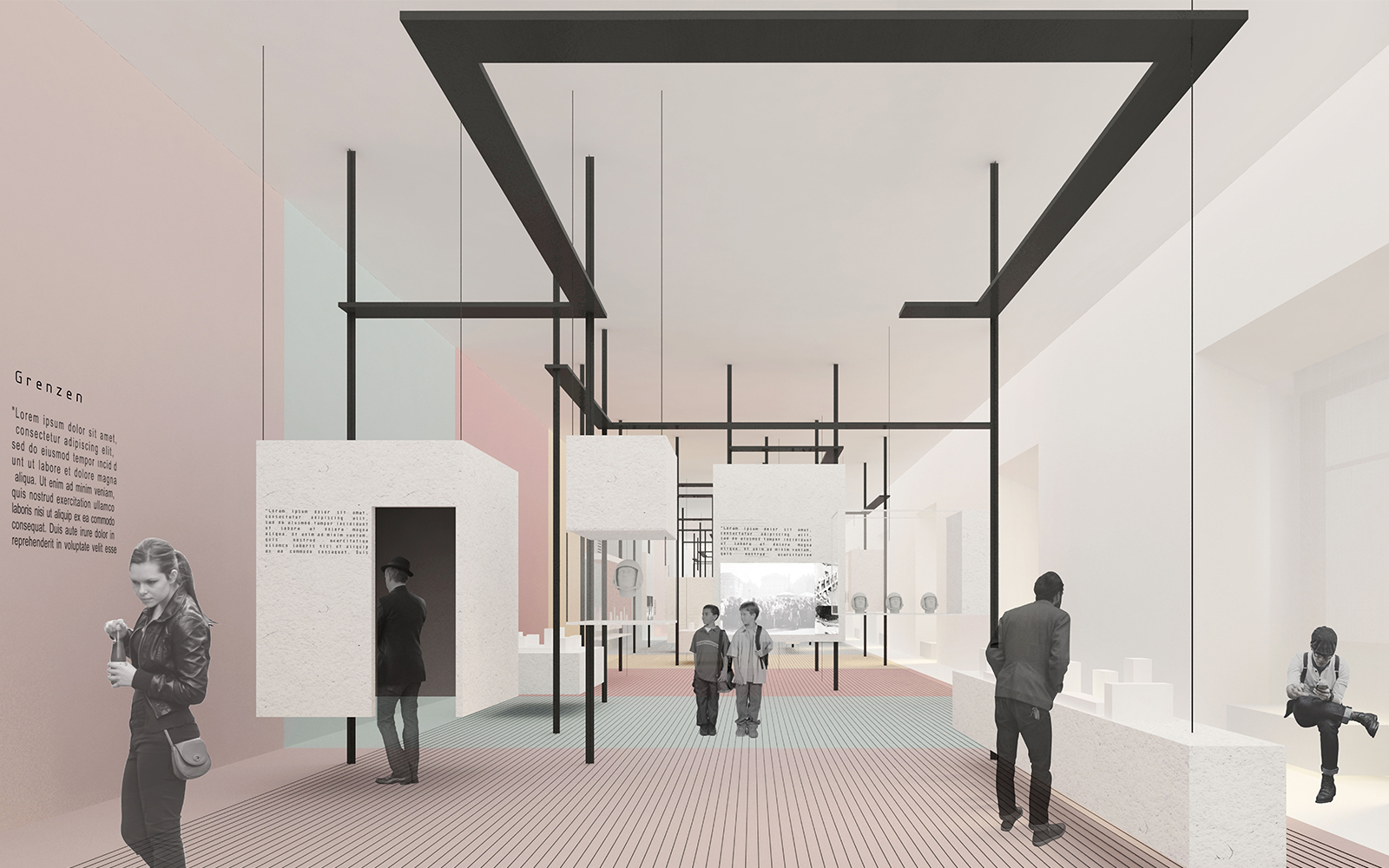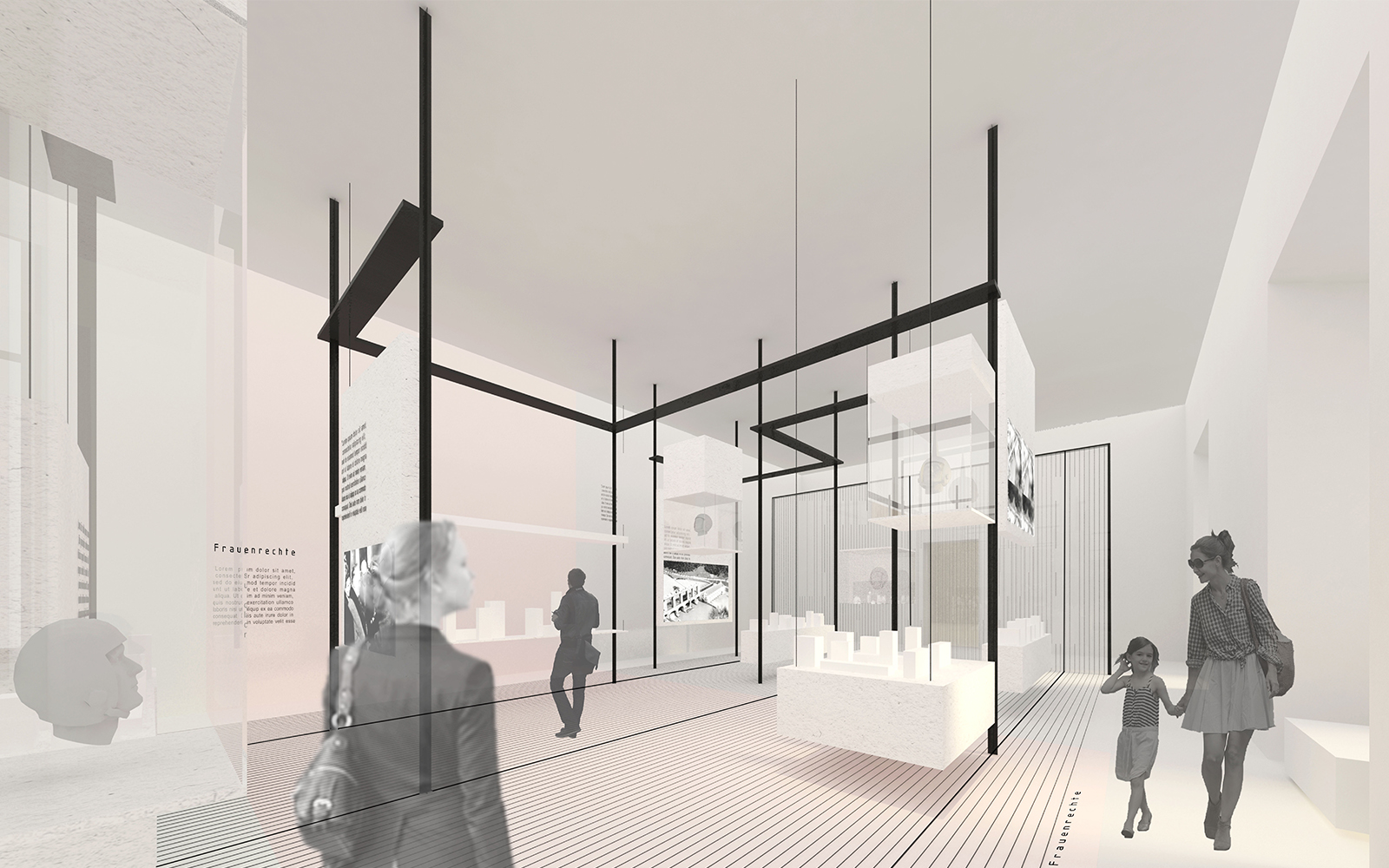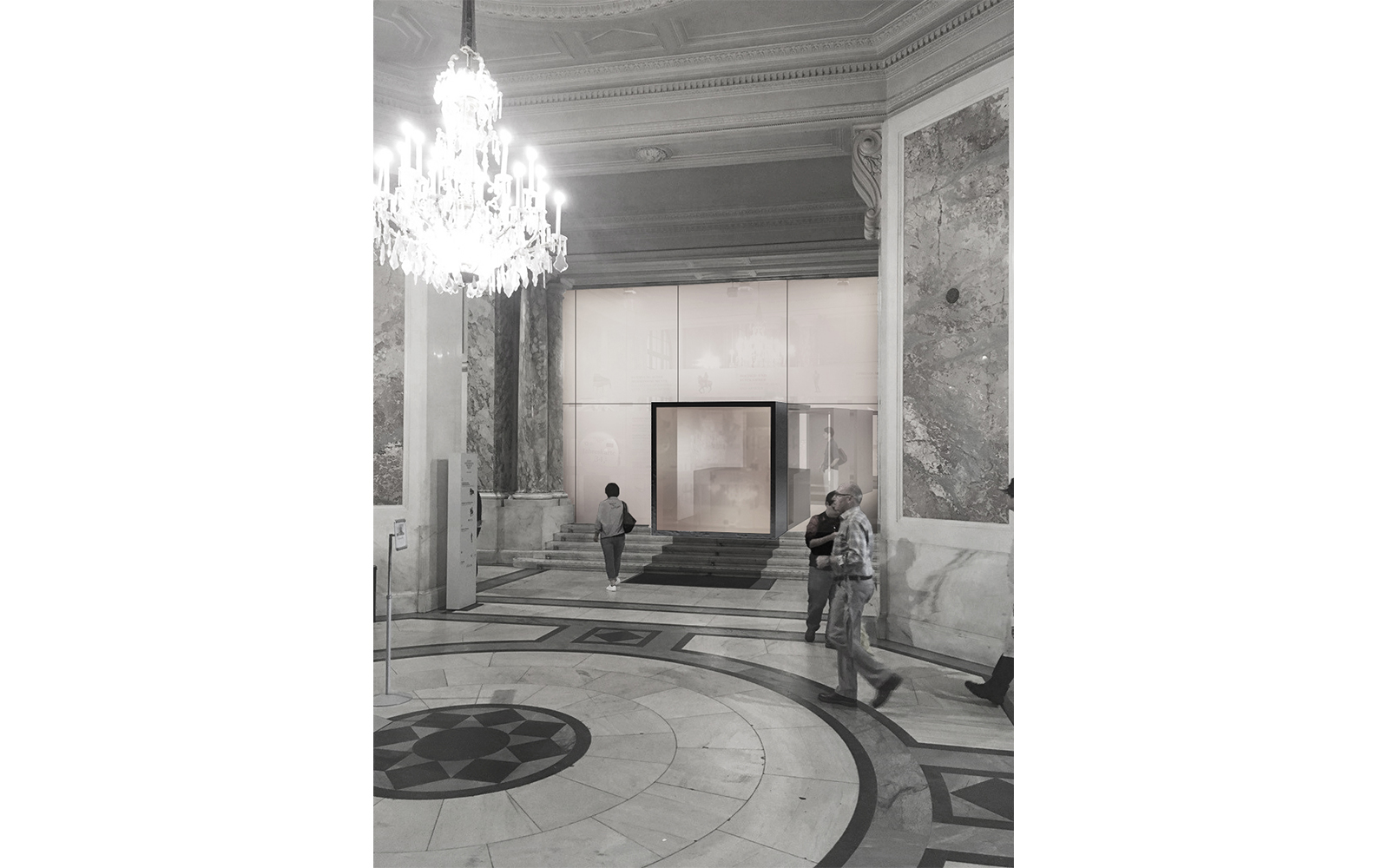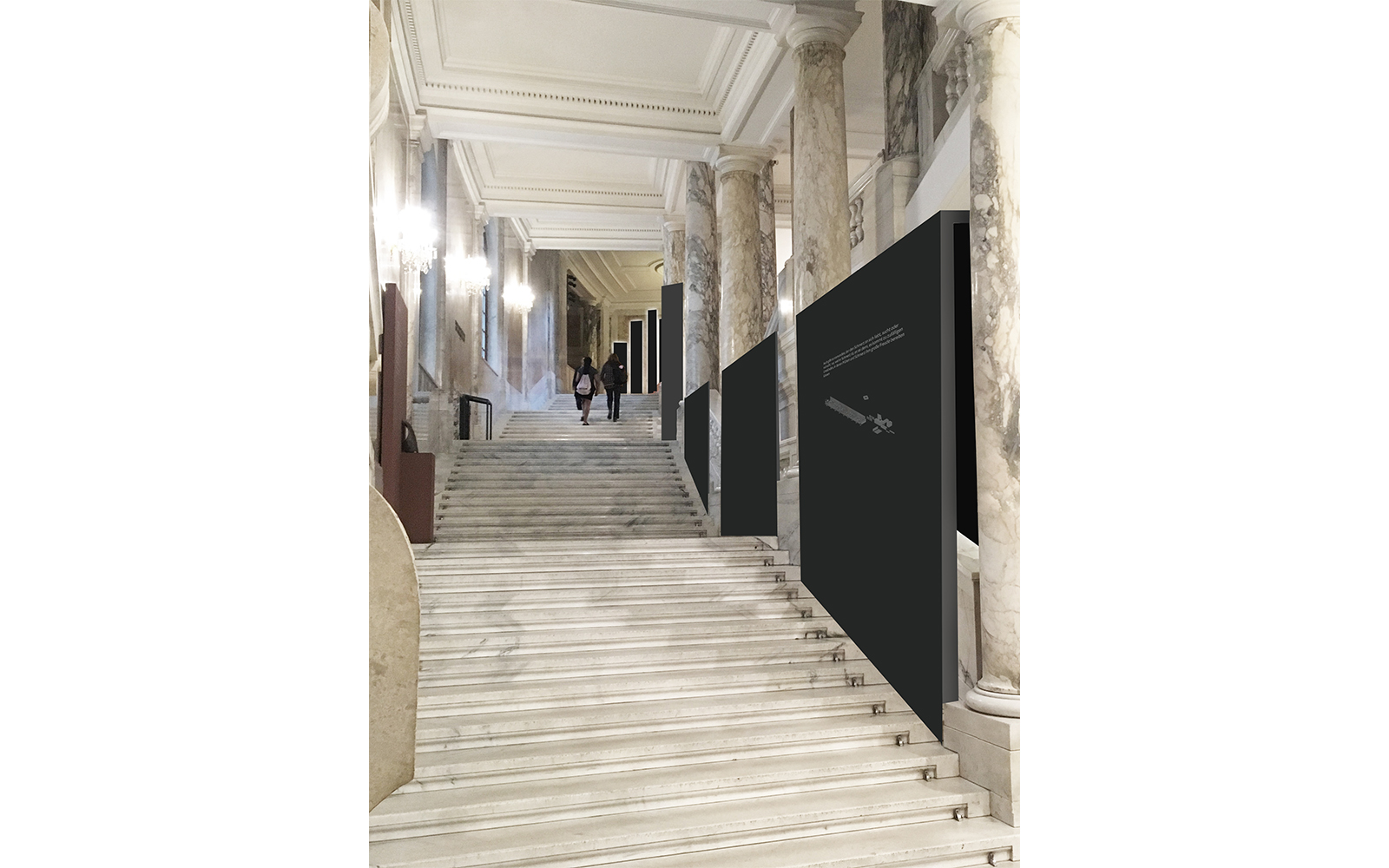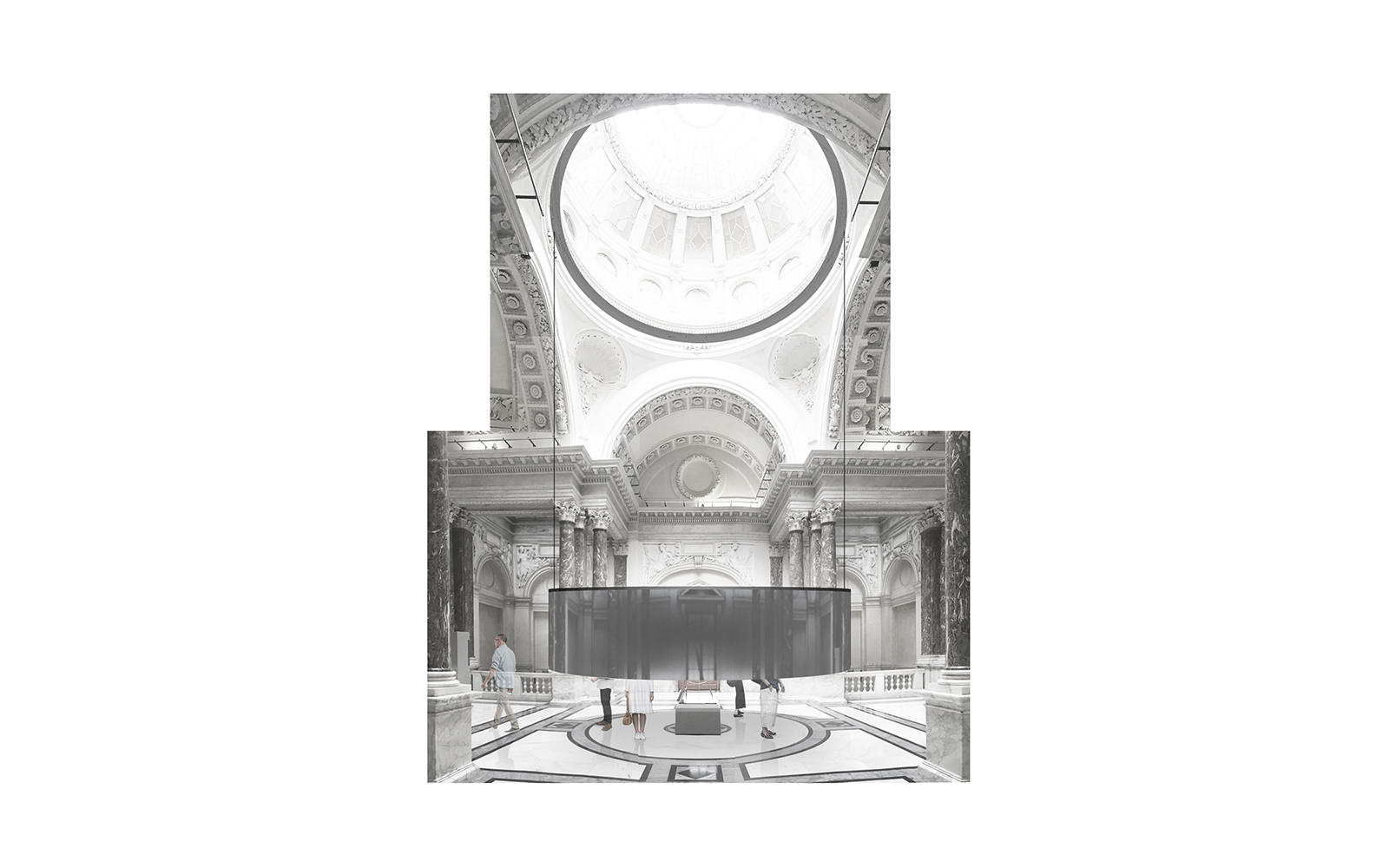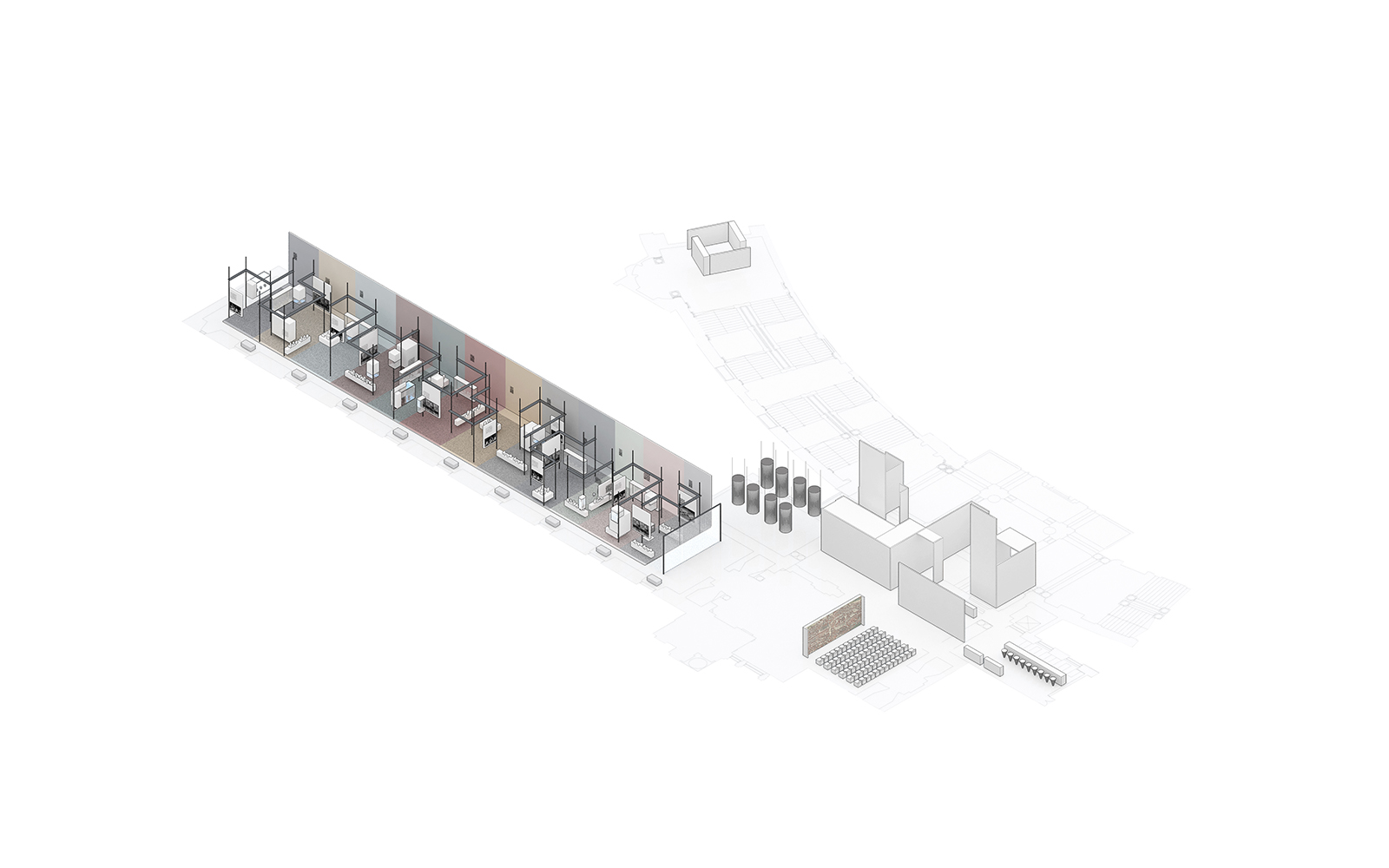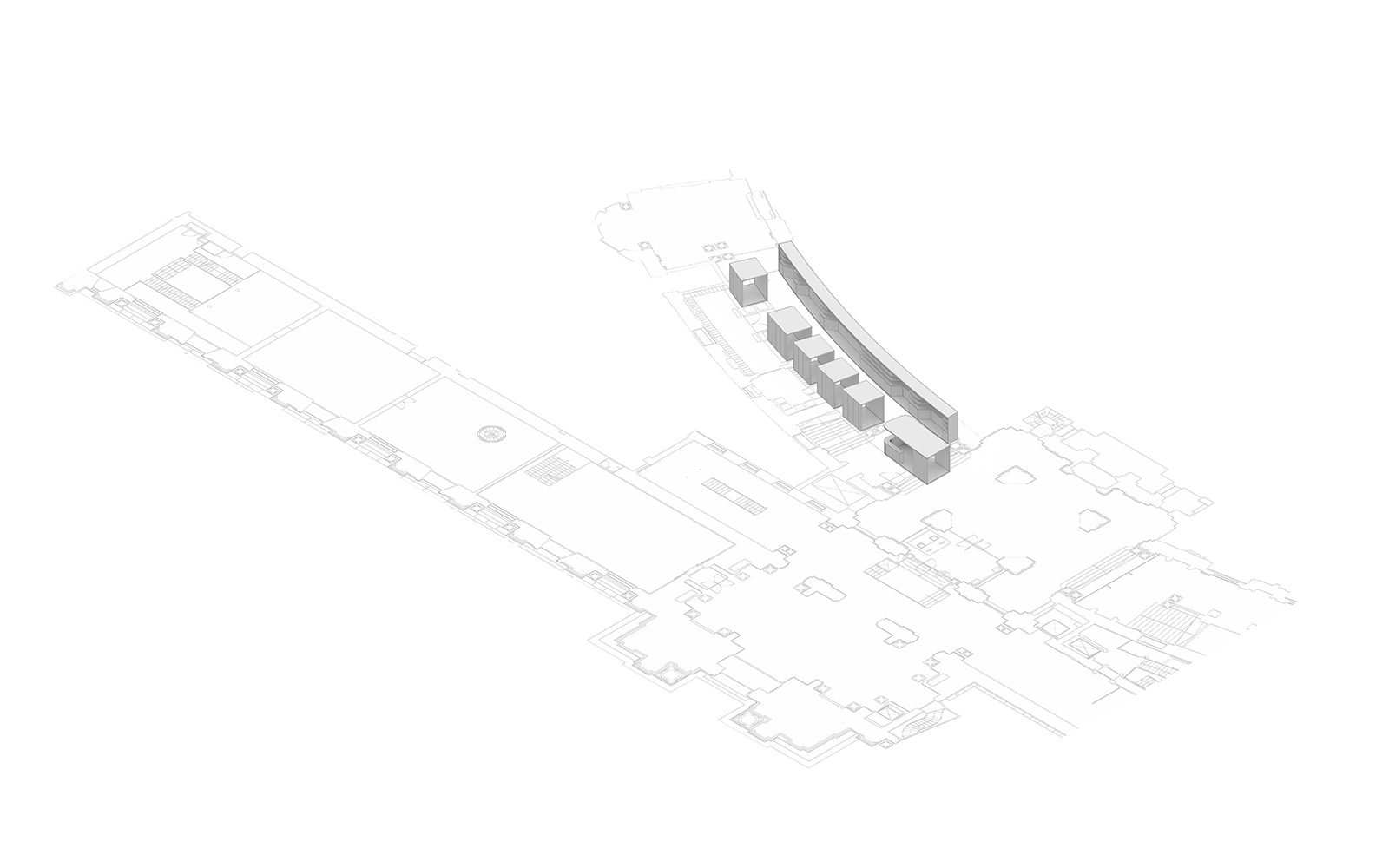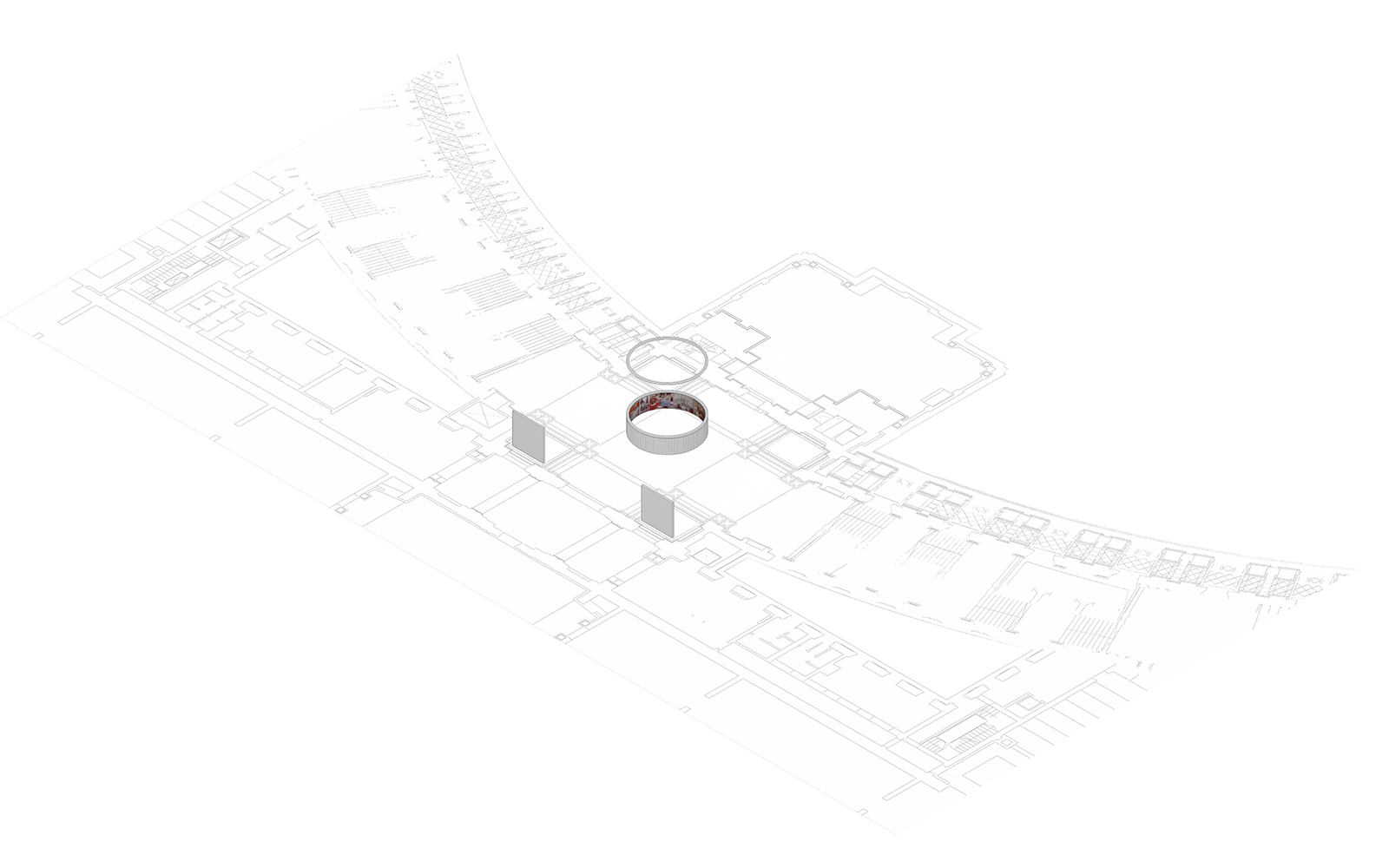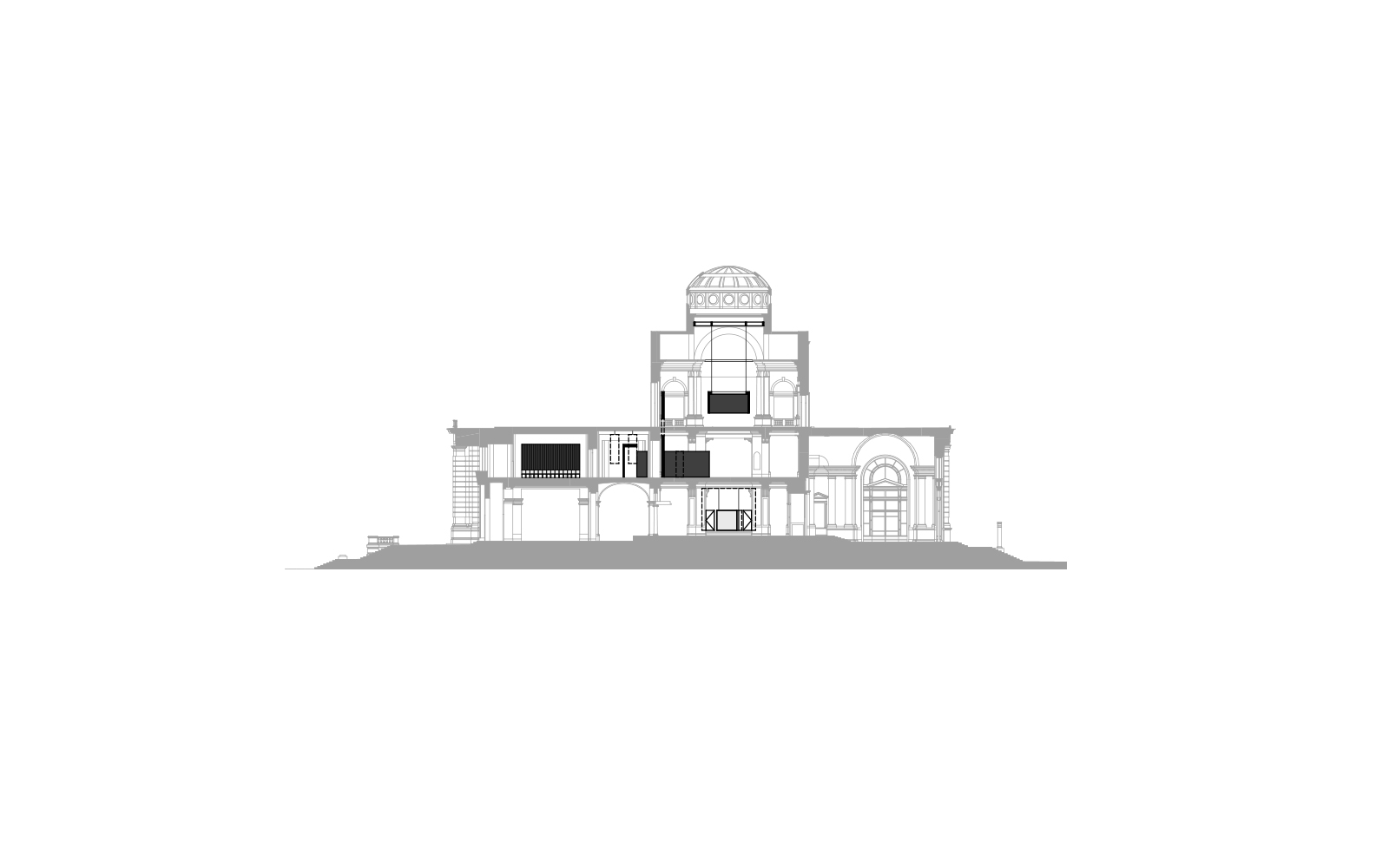House of History Austria
2017
2017
Neue Burg, 1010 Vienna
2017 Competition, 2nd prize
with Tabanioglu Architects
Space allocation plan: Conceptual ideas for the design of the museum and exhibition rooms of the HGÖ
In the new entrance to the museums, the cash desk furniture penetrates the glass portal with a showcase designed to accommodate moveable exhibits and thus provides a striking announcement for the Haus der Geschichte Österreich in the portico. With its large-volume features, the exhibition is well integrated into the design codex of the magnificent staircases and richly decorated rooms. The concept does not follow a simple chronological narrative but tries to lead the visitor in a playful way into the complexity of the historical time window. The timeline with its modules as well as the breaks and continuities interlock to form a walk-in matrix.
Through the staircase, an interactive media wall leads in segments to the top, where on the Jünglingsplateau a theme-related playable suspended "projection ring" creates a spatial connection to the dome. Opposite the exhibition area, the black "time bridge", a bridge-shaped construction, which can be walked on over narrow stairs and is enclosed all around, leads from the Jünglingsplateau across the Jagdplateau and at the same time blocks access to and views of the terrace towards the Heldenplatz to counteract an "iconisation of the Hitler balcony". Acoustic stimulation during ascent and descent - "Tomorrow belongs to me" from the film Cabaret and the cuckoo call that used to announce air raids on radio during the last years of the war - and in between only the steps of the visitors, no view and no daylight, form a sensual space for reflection and experience on the exhibition about the "dark years". Vis-à-vis this installation, the exhibition room itself follows a complex methodology in which the timeline and thematic clusters overlap each other in a complex manner and, thanks to its modular structure, correspond to the heterogeneity of the objects and the planned polyphony of their contents.
"The project impresses with a subtle and convincing, albeit complex spatial setting of the curatorial concept and is of timeless elegance", the jury appreciated the project. The jury praised the "conceptual structure of the timeline, cluster and narrative levels", which was translated into a stringent artistic solution, as well as the inclusion of floor and ceiling. However, the authors were not able to convincingly convey the specific formal treatment of the clusters to the jury, and there was a lack of sufficient scope for communicative and discursive aspects, which were, however, a central concern of the responsible persons at the HGÖ.
Extract from the jury' s report:
"The project impresses with a subtle and convincing, albeit complex spatial setting of the curatorial concept and is of timeless elegance. The conceptual structure of timeline, cluster, and narrative levels has been translated into a stringent artistic solution. Particularly noteworthy is the view into the depths of the space, which allows for the most diverse visual relationships, as well as the inclusion of floor and ceiling by means of the chosen construction".
In the new entrance to the museums, the cash desk furniture penetrates the glass portal with a showcase designed to accommodate moveable exhibits and thus provides a striking announcement for the Haus der Geschichte Österreich in the portico. With its large-volume features, the exhibition is well integrated into the design codex of the magnificent staircases and richly decorated rooms. The concept does not follow a simple chronological narrative but tries to lead the visitor in a playful way into the complexity of the historical time window. The timeline with its modules as well as the breaks and continuities interlock to form a walk-in matrix.
Through the staircase, an interactive media wall leads in segments to the top, where on the Jünglingsplateau a theme-related playable suspended "projection ring" creates a spatial connection to the dome. Opposite the exhibition area, the black "time bridge", a bridge-shaped construction, which can be walked on over narrow stairs and is enclosed all around, leads from the Jünglingsplateau across the Jagdplateau and at the same time blocks access to and views of the terrace towards the Heldenplatz to counteract an "iconisation of the Hitler balcony". Acoustic stimulation during ascent and descent - "Tomorrow belongs to me" from the film Cabaret and the cuckoo call that used to announce air raids on radio during the last years of the war - and in between only the steps of the visitors, no view and no daylight, form a sensual space for reflection and experience on the exhibition about the "dark years". Vis-à-vis this installation, the exhibition room itself follows a complex methodology in which the timeline and thematic clusters overlap each other in a complex manner and, thanks to its modular structure, correspond to the heterogeneity of the objects and the planned polyphony of their contents.
"The project impresses with a subtle and convincing, albeit complex spatial setting of the curatorial concept and is of timeless elegance", the jury appreciated the project. The jury praised the "conceptual structure of the timeline, cluster and narrative levels", which was translated into a stringent artistic solution, as well as the inclusion of floor and ceiling. However, the authors were not able to convincingly convey the specific formal treatment of the clusters to the jury, and there was a lack of sufficient scope for communicative and discursive aspects, which were, however, a central concern of the responsible persons at the HGÖ.
Extract from the jury' s report:
"The project impresses with a subtle and convincing, albeit complex spatial setting of the curatorial concept and is of timeless elegance. The conceptual structure of timeline, cluster, and narrative levels has been translated into a stringent artistic solution. Particularly noteworthy is the view into the depths of the space, which allows for the most diverse visual relationships, as well as the inclusion of floor and ceiling by means of the chosen construction".
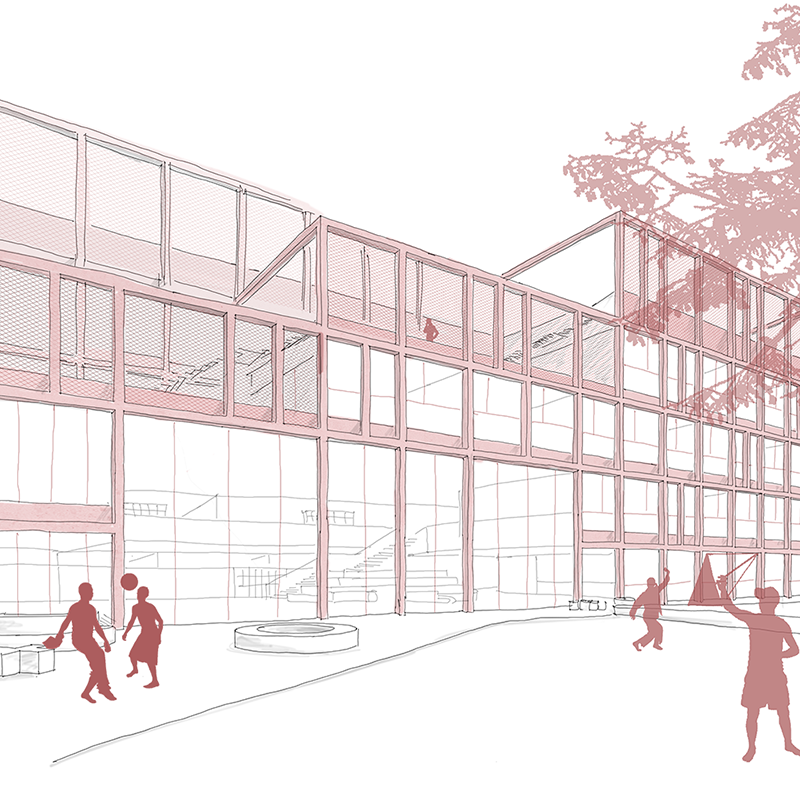
Anerkennung
AHS
Otto-Preminger-Straße
Otto-Preminger-Straße
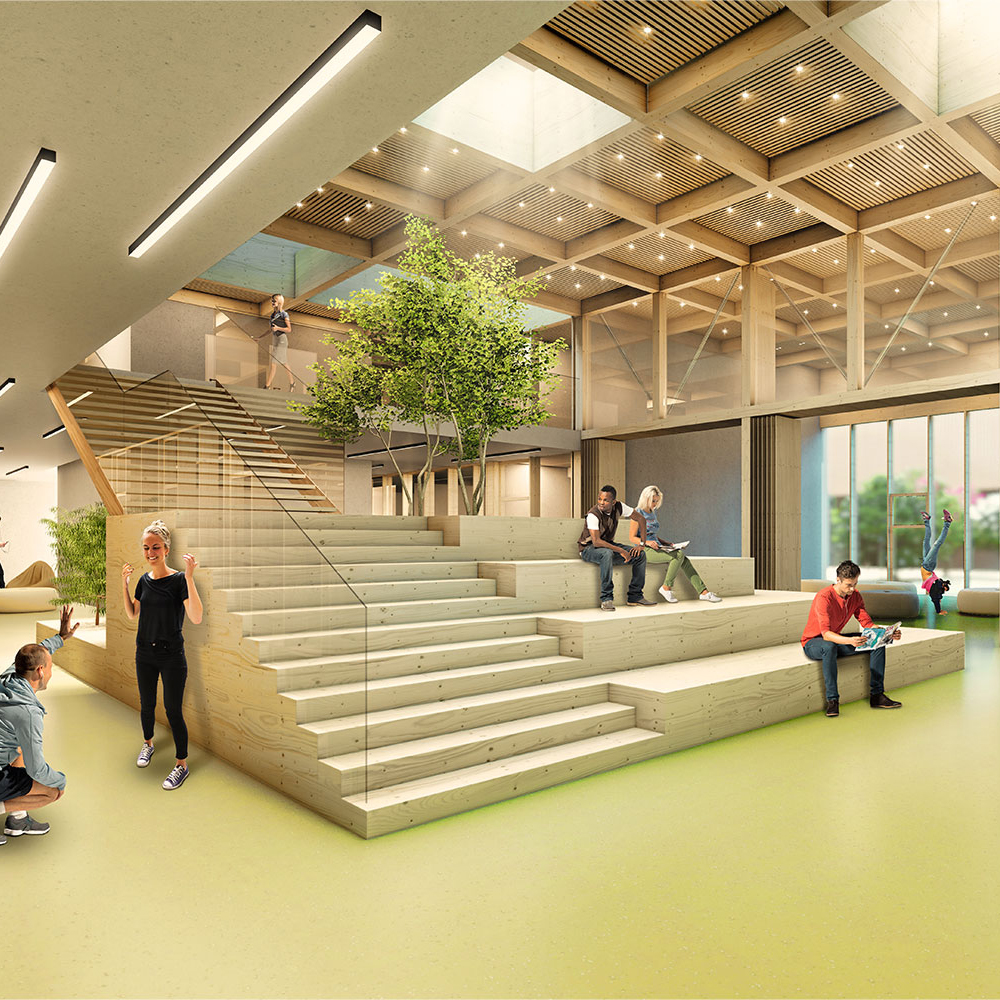
Wettbewerb
Alpen-Adria-Gymnasium
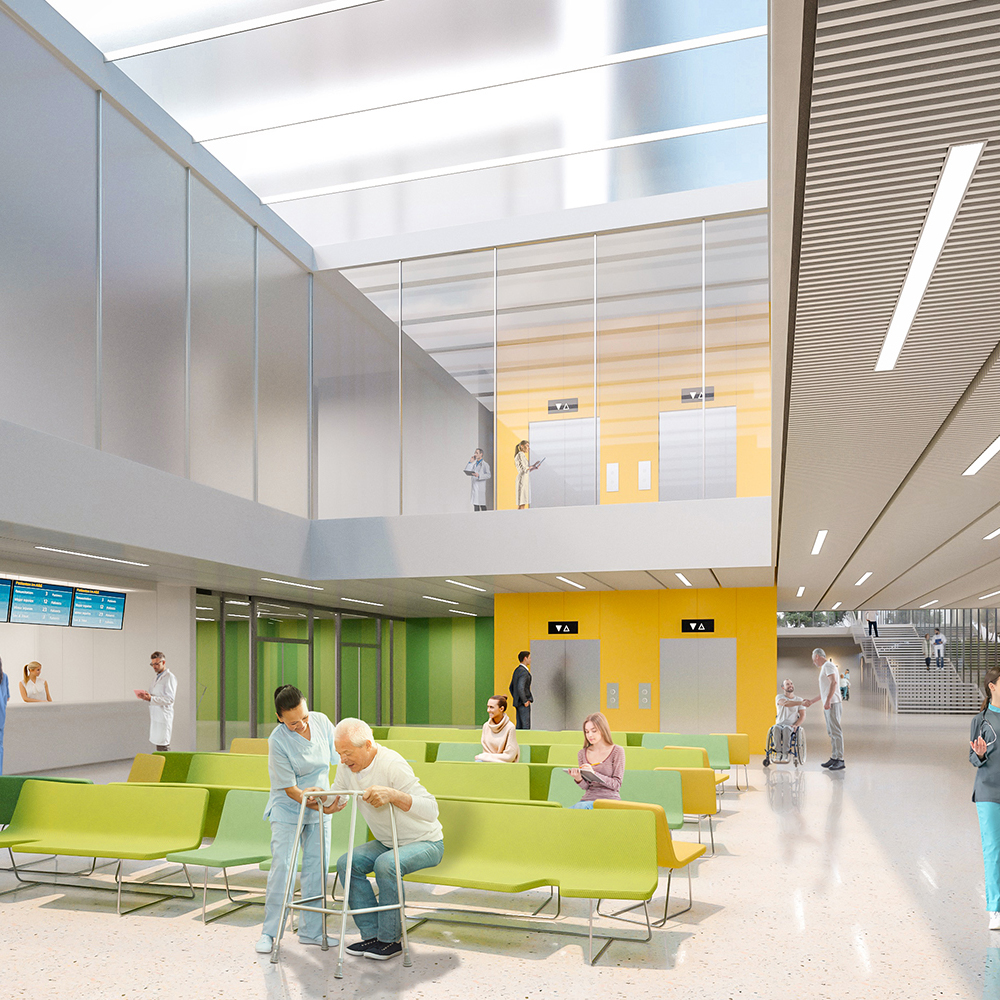
Competition
Oberpullendorf Hospital
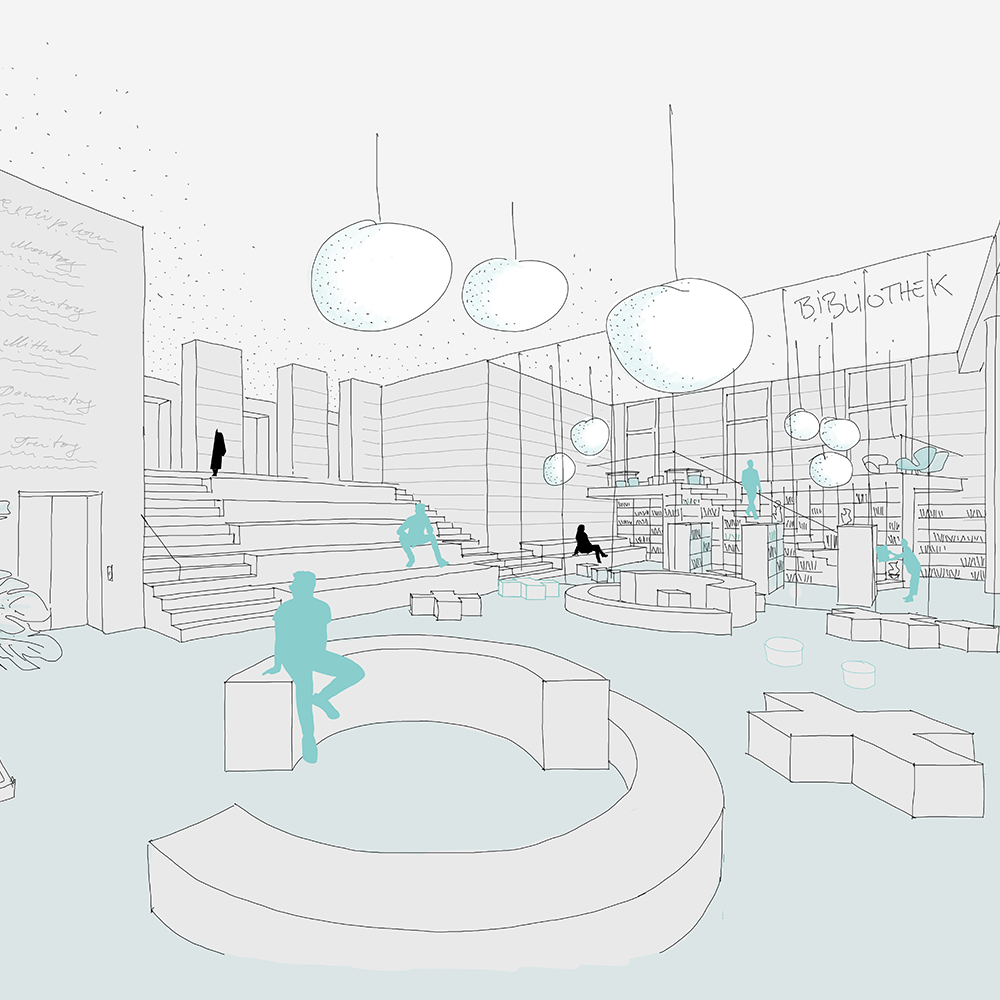
2. Preis
Semmelweisareal Haus 1
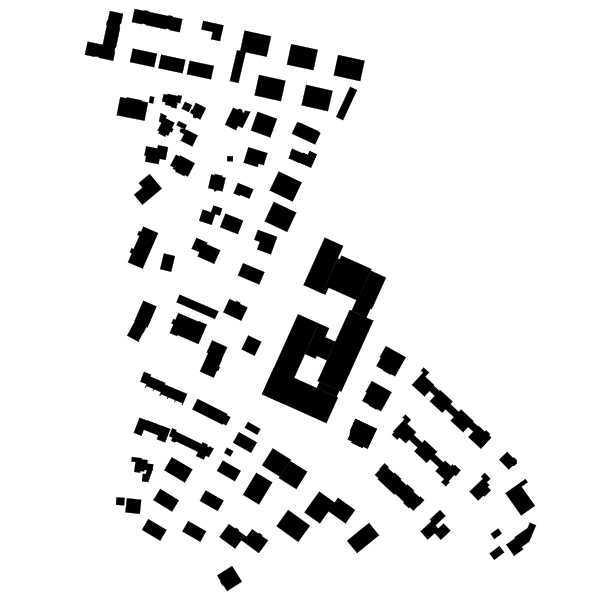
Anerkennung
Federal School Centre Zell am See
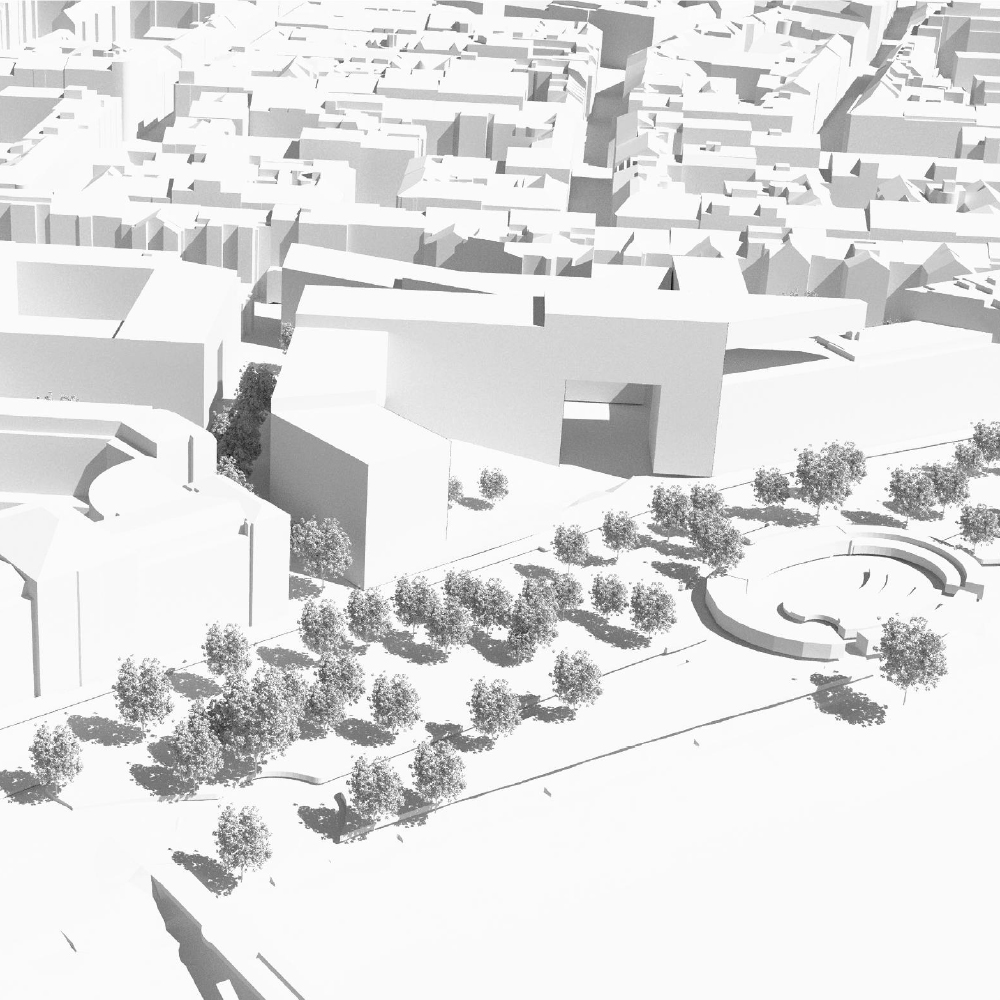
Competition
Leopold's Quarter
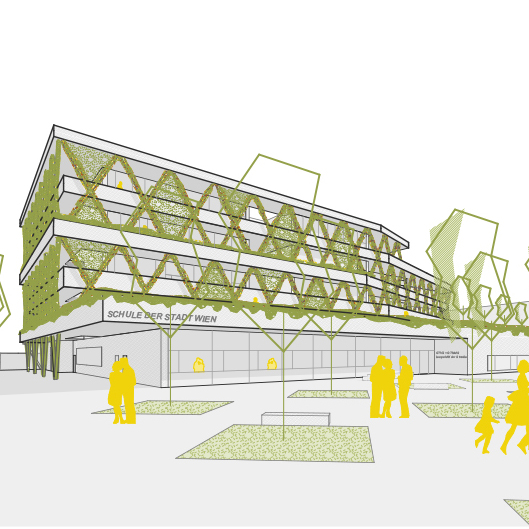
Competition
School Leopold-Kohr-Straße
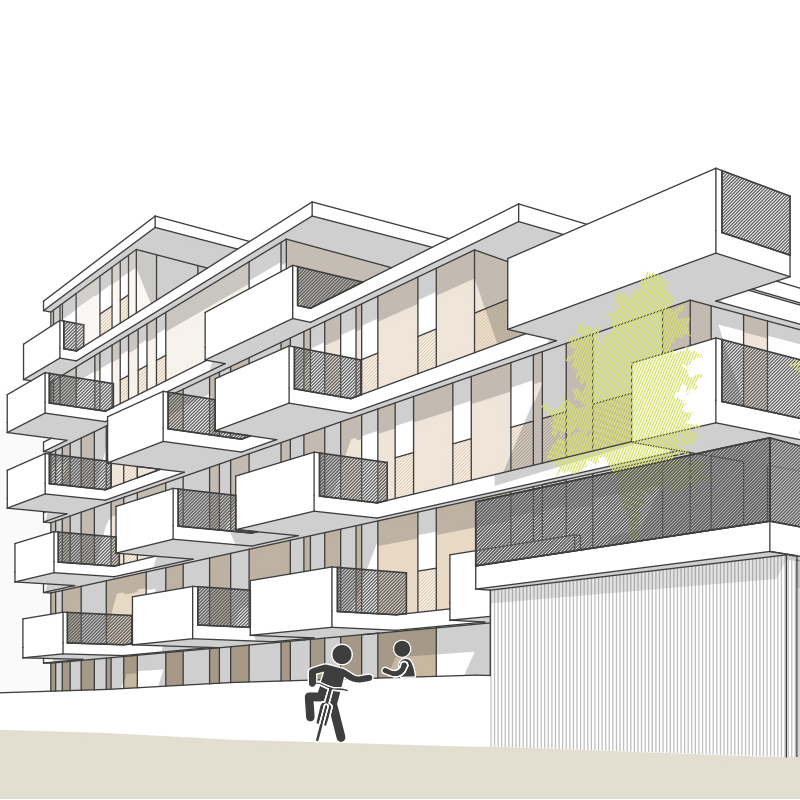
Recognition
Residential development Mendelgasse
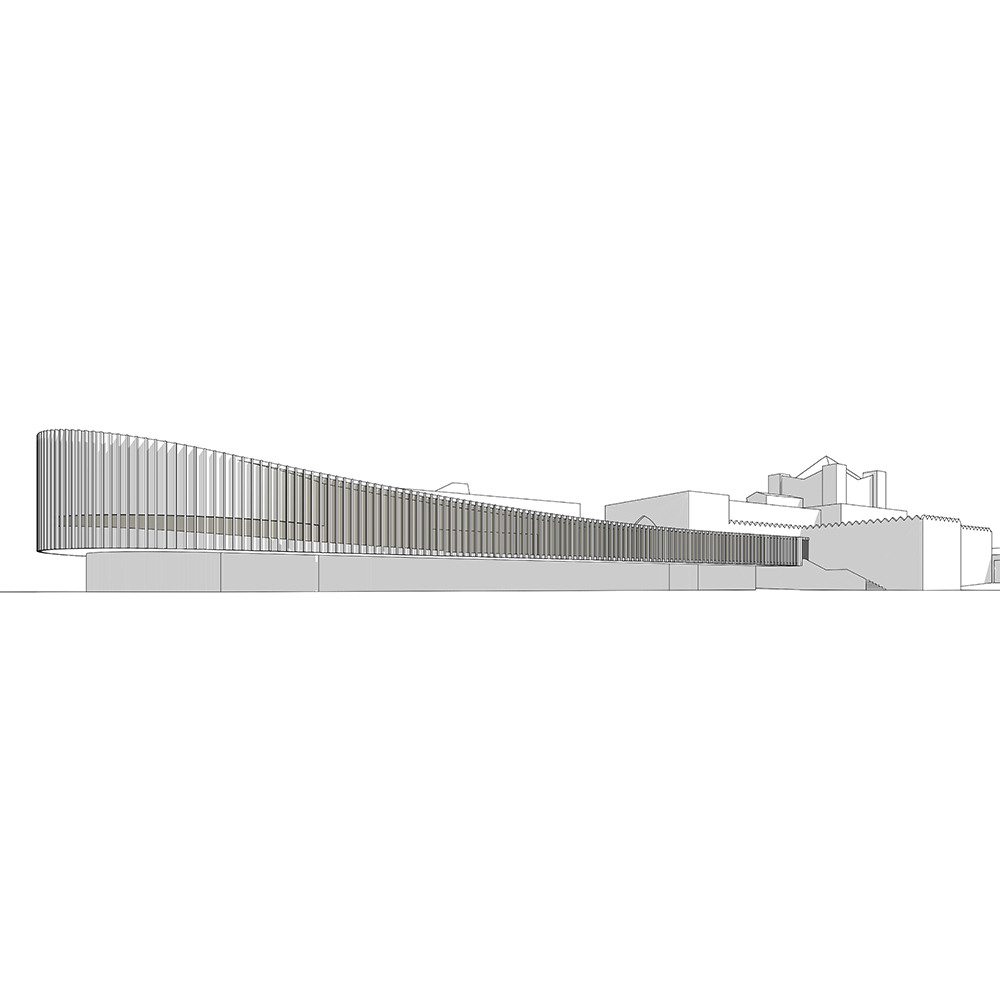
Competition
Extension Crematorium Vienna
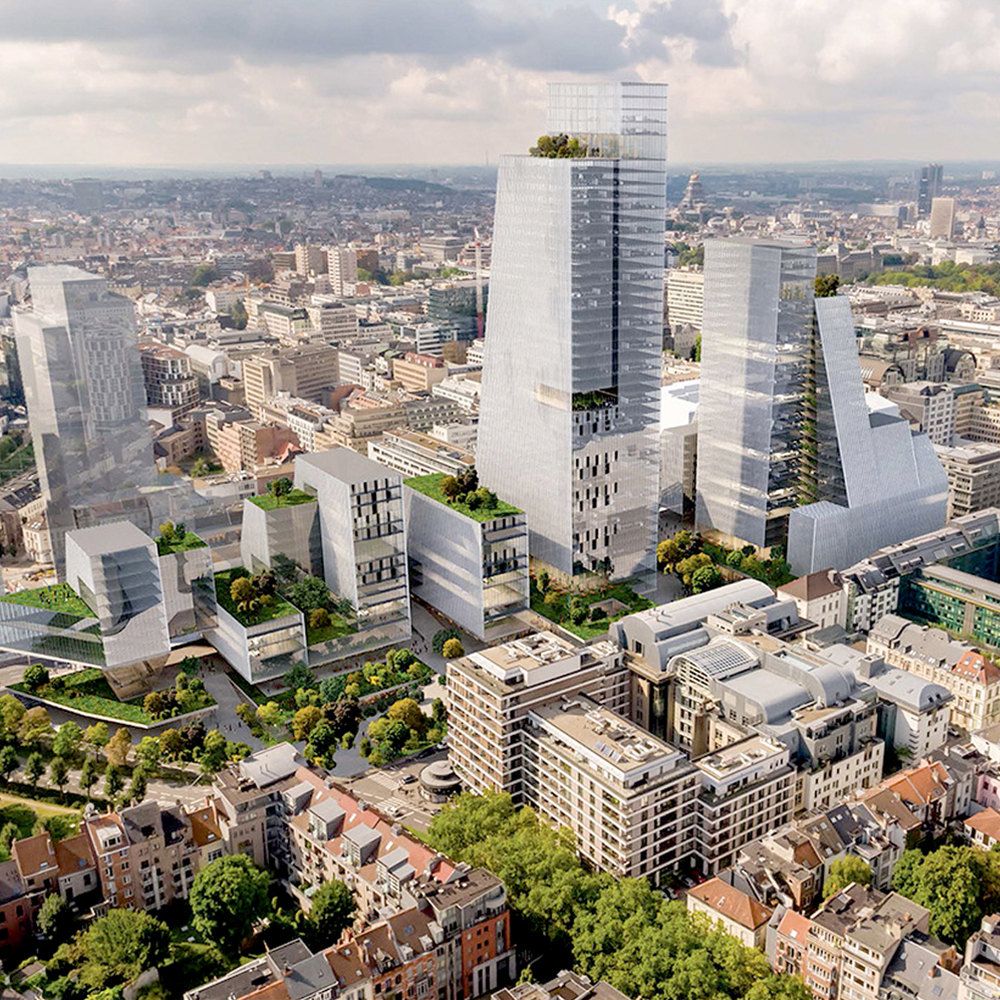
Wettbewerb
Loi 130
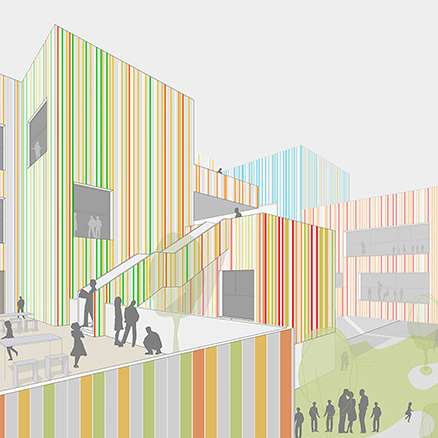
Recognition
Education Campus Deutschordenstraße
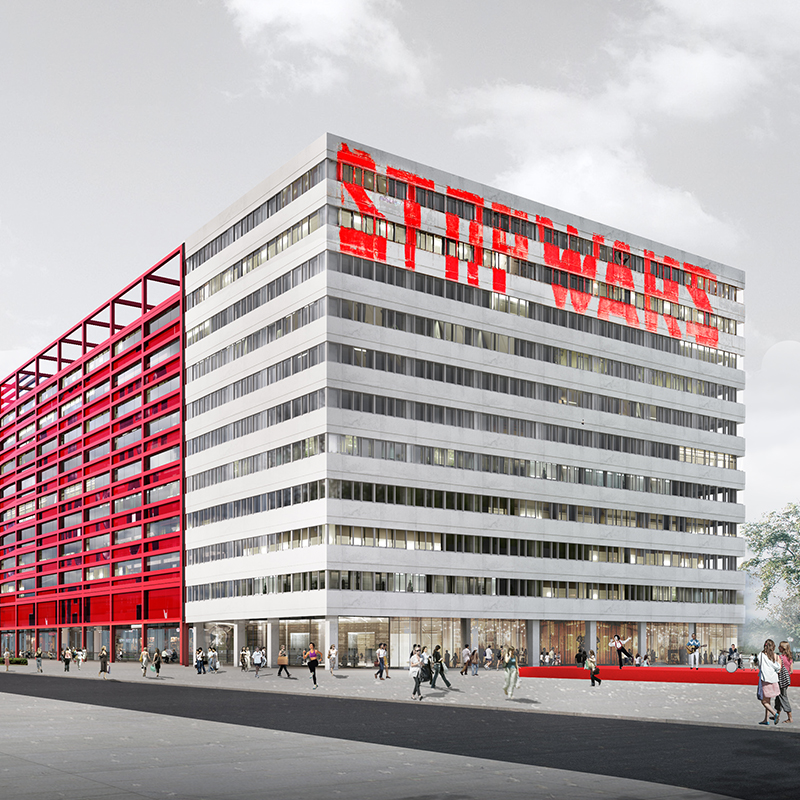
Wettbewerb
Haus der Statistik
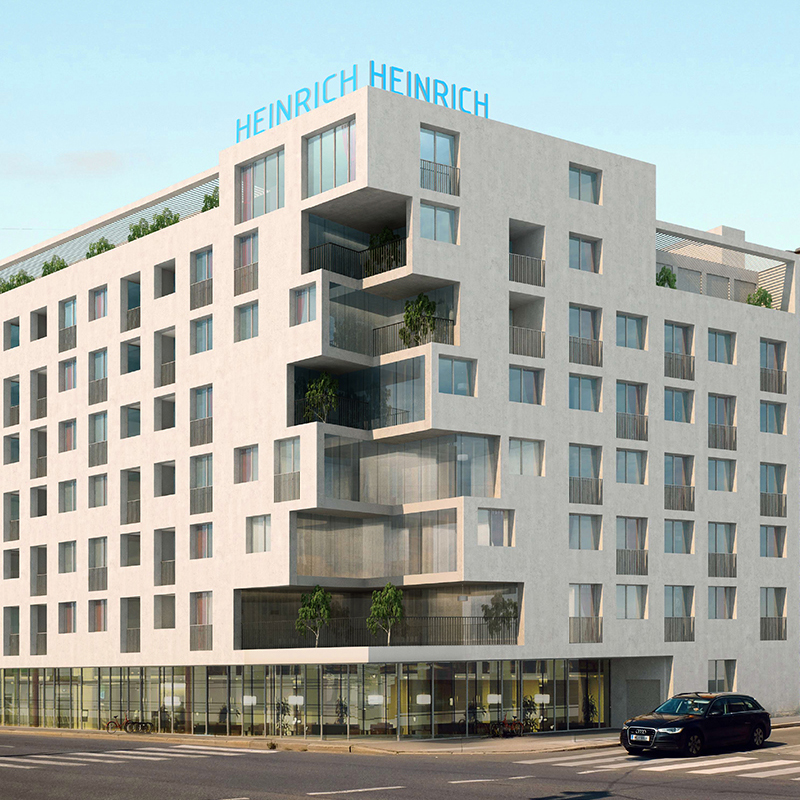
Wettbewerb
Heinrich – Serviced Apartments
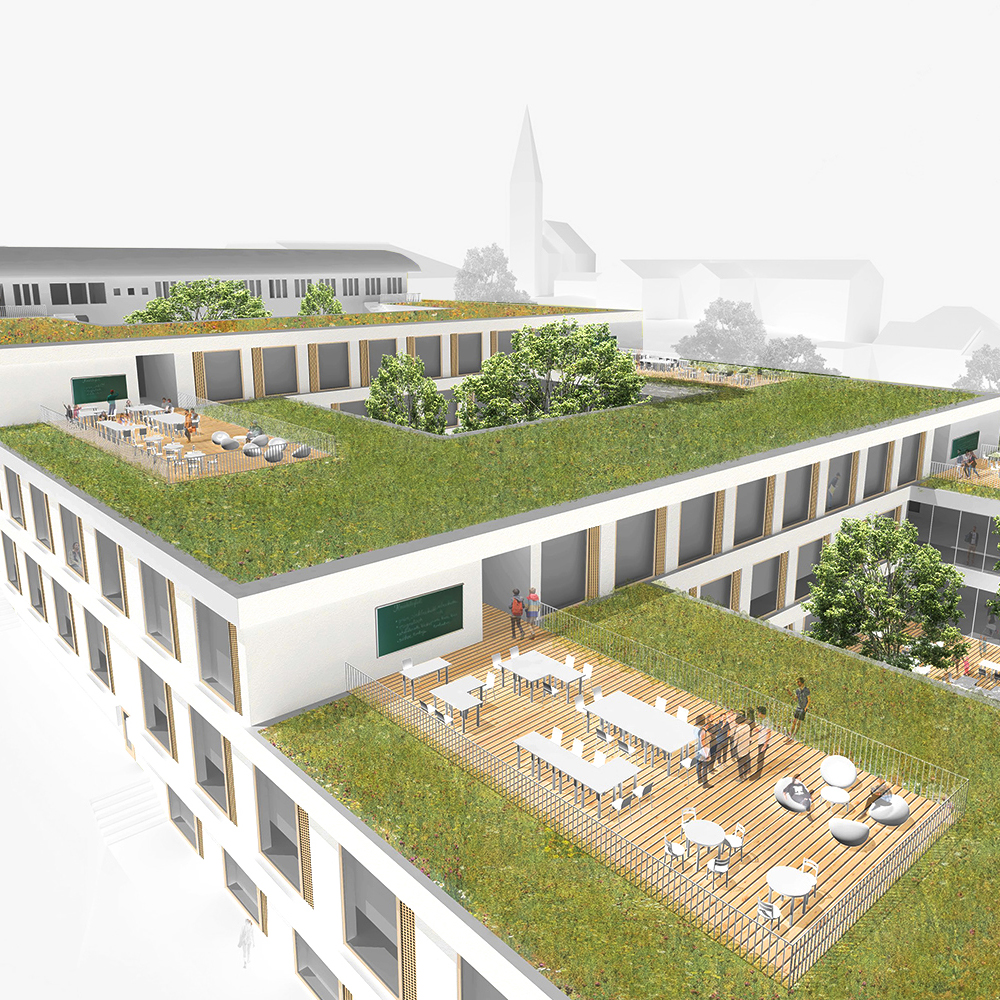
Wettbewerb
Konrad-Lorenz-Secondary School Gänserndorf
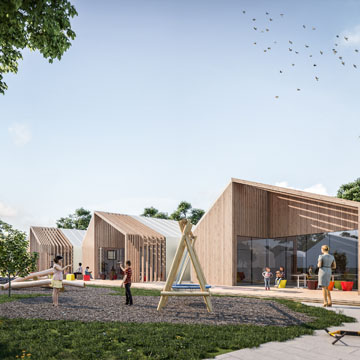
3rd Prize
Lower Austria State Kindergarten Pulkau
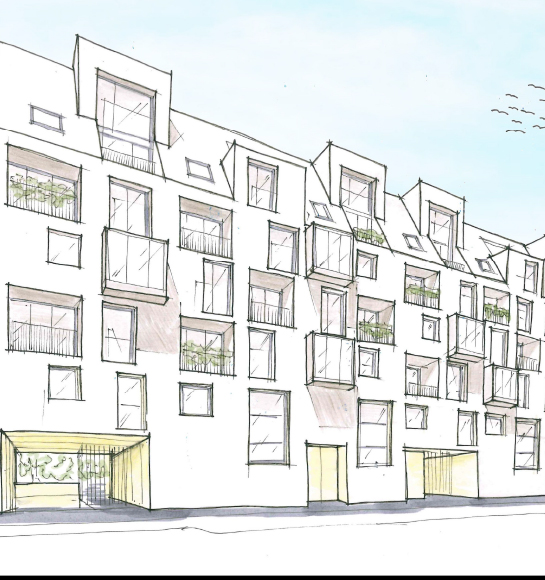
Competition
Residential building Buchengasse
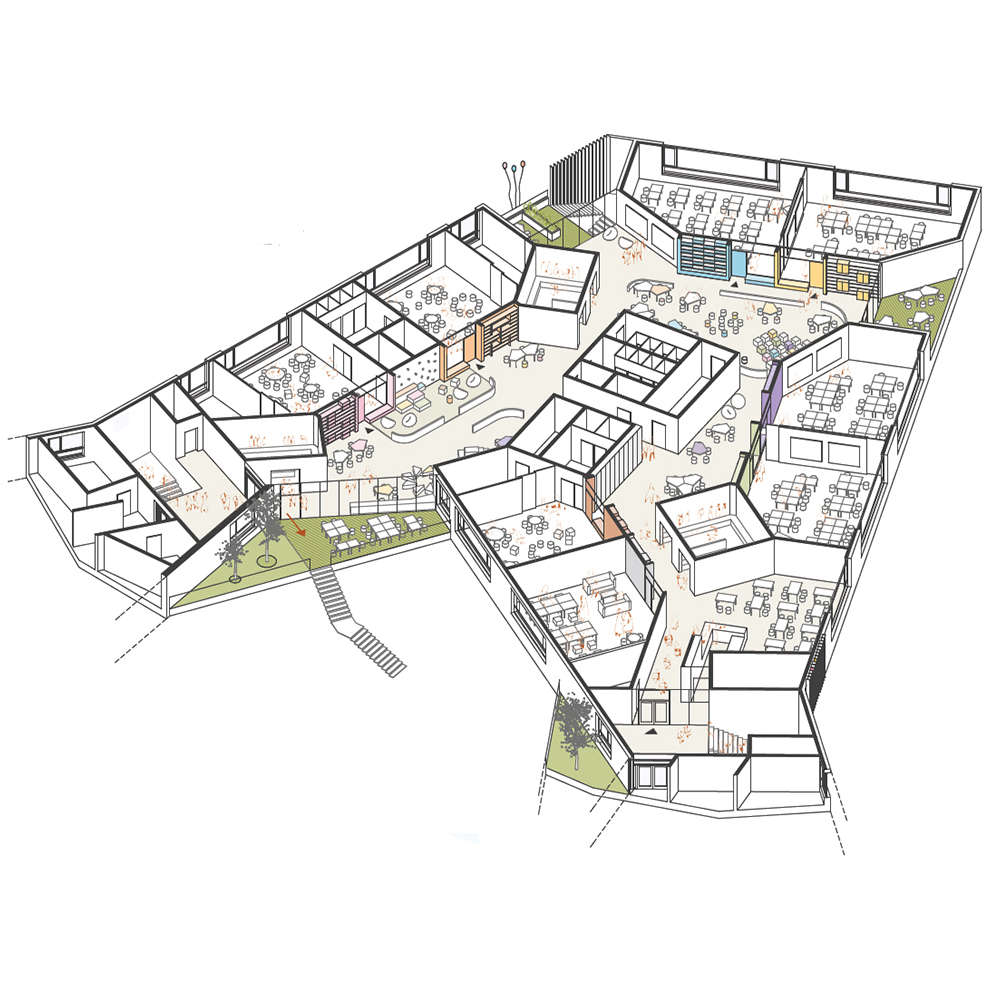
3rd prize
Aron Menczer Education Campus
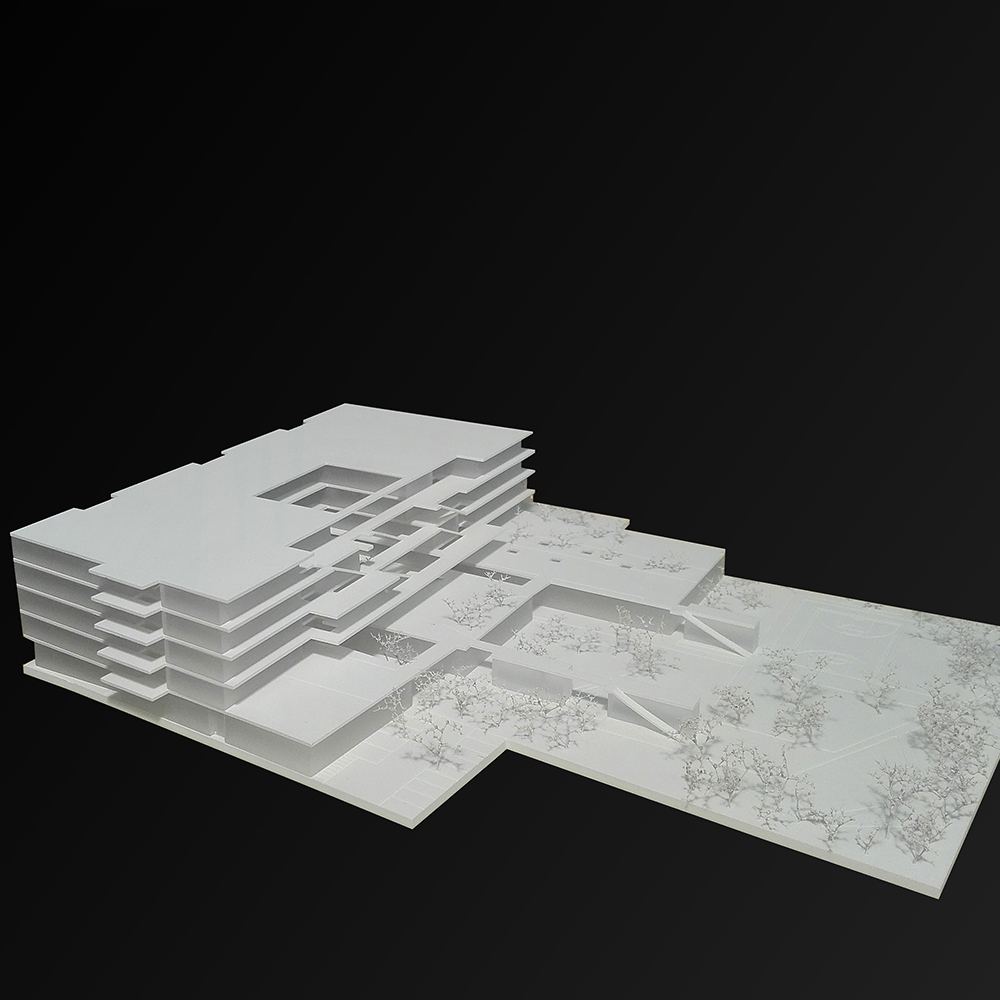
3rd prize
Education Campus Atzgersdorf
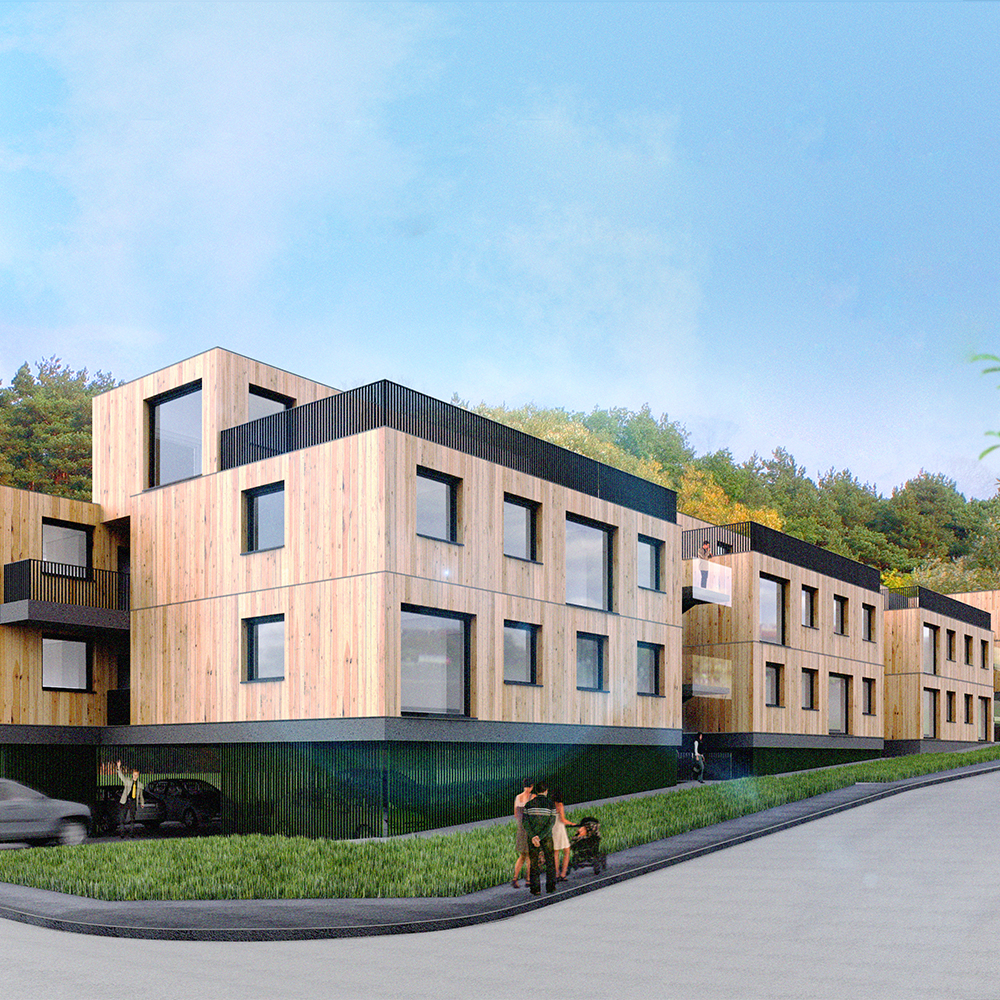
Wettbewerb
Forest Hill - Affordable living in Breitenfurt
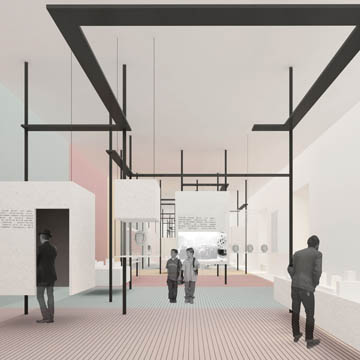
2nd prize
House of History Austria
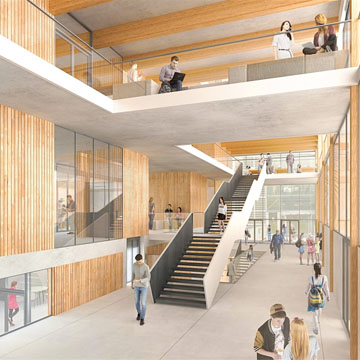
Recognition
New building for the University of Natural Resources and Applied Life Sciences, Vienna
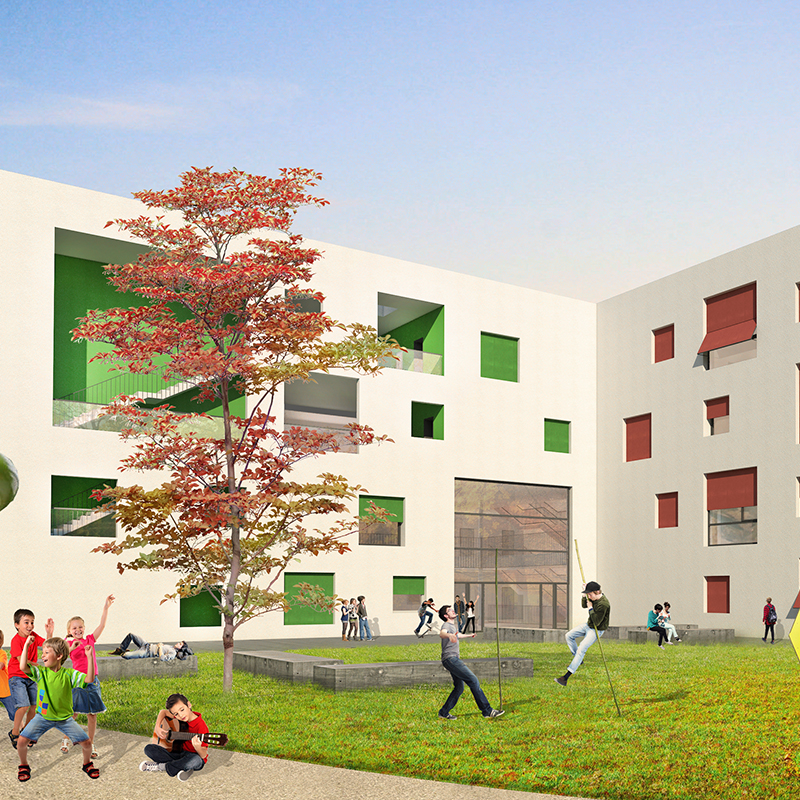
Wettbewerb
NMS (Neue Mittelschule – New Secondary School) Spielmanngasse
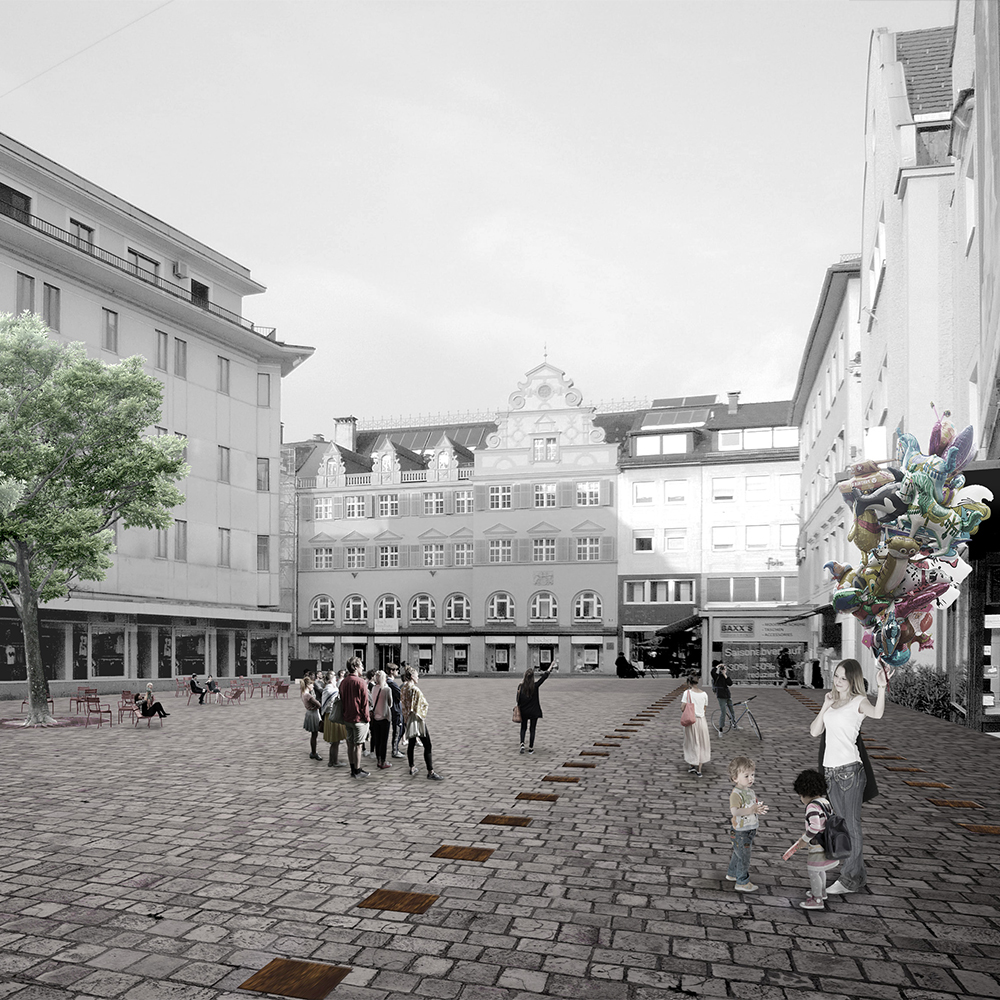
Wettbewerb
Neighbourhood development Leutbühel
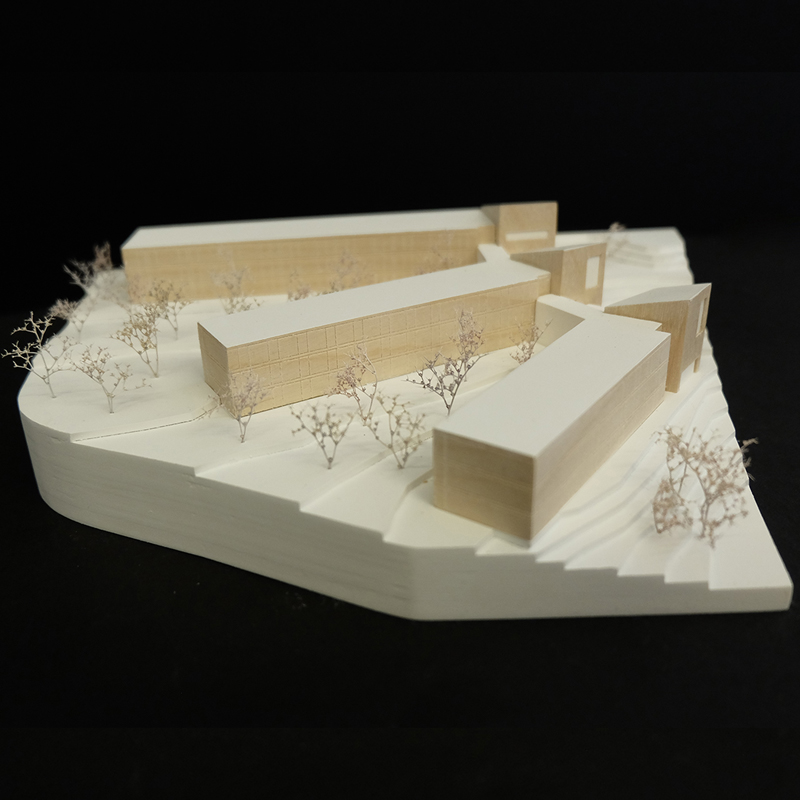
Competition
Students hostel Pitzelstätten
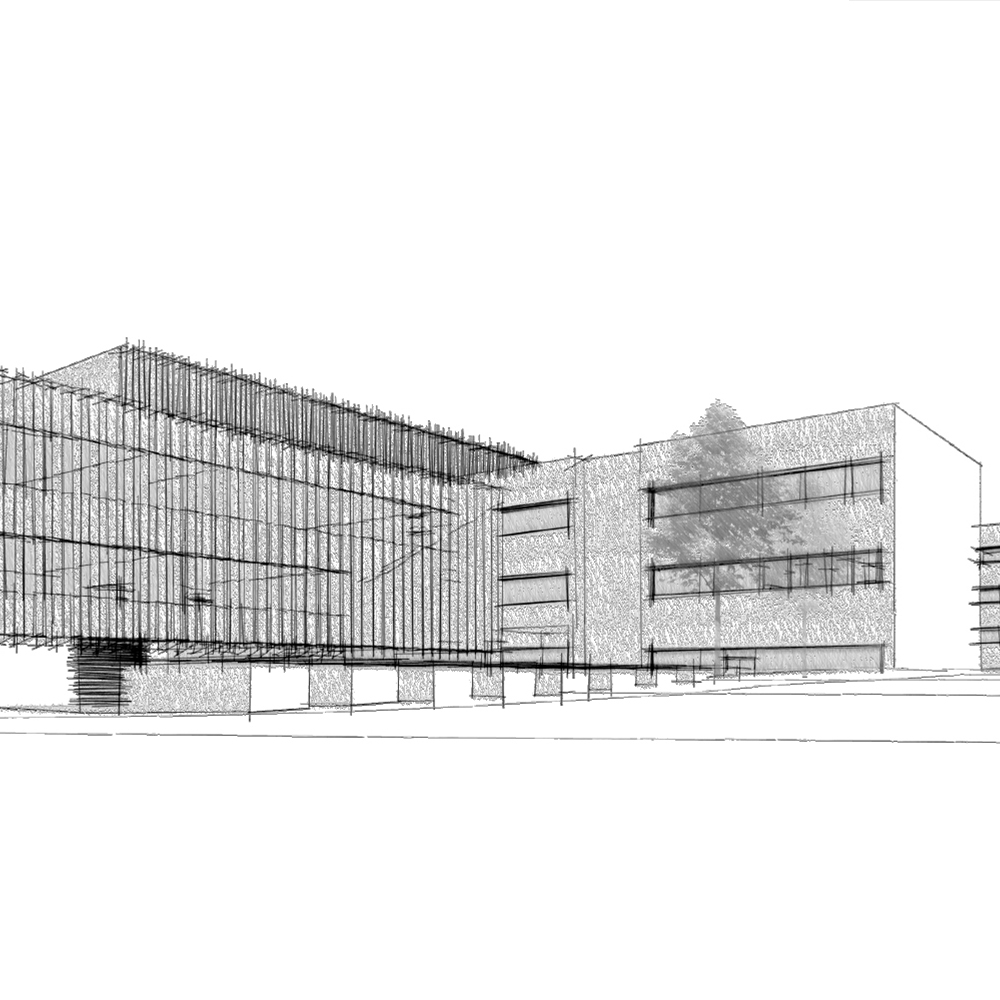
Wettbewerb
School Competence Centre Ferlach
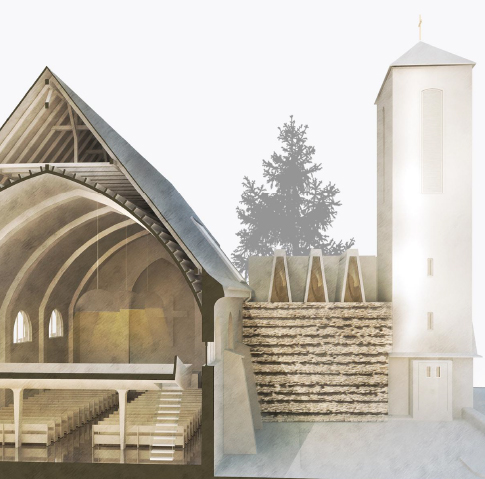
Competition
Parish church of Essling
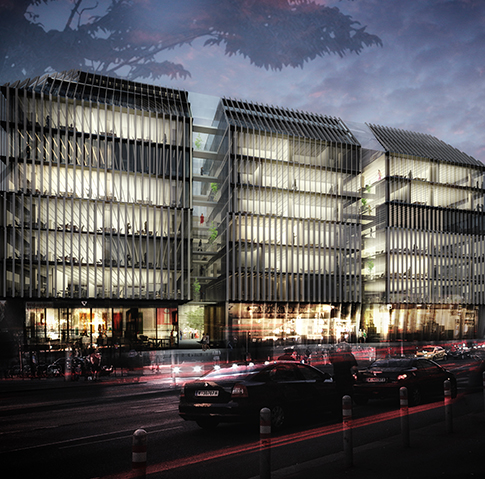
Competition
Rathausstraße 1
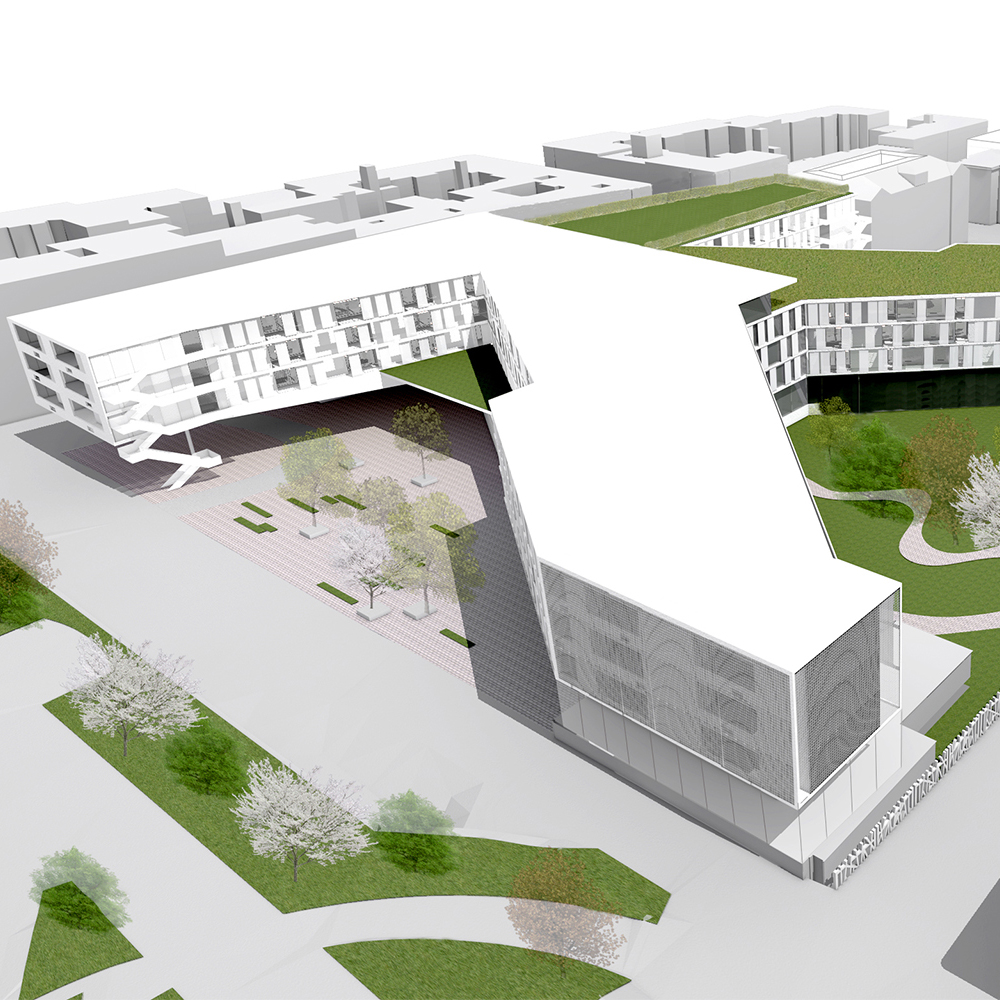
Competition
Kaiserin Elisabeth Hospital
Multifunctional Centre Elsterwerdaer Platz


